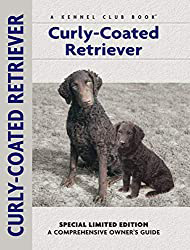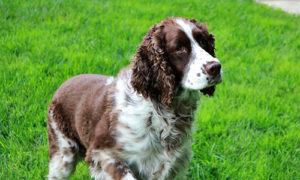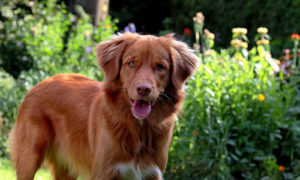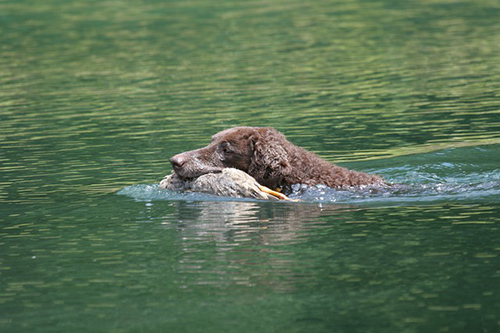
The Curly Coated Retriever is one of the oldest retriever breeds descended from a combination of the English Water Spaniel, Irish Water Spaniel, Poodle, Retrieving setters, and native water dogs of Newfoundland.
Curly Coated Retrievers were brought to Britain from Newfoundland in the early 1800s and first appeared at British shows in 1860. America got its first look at the breed in 1907.
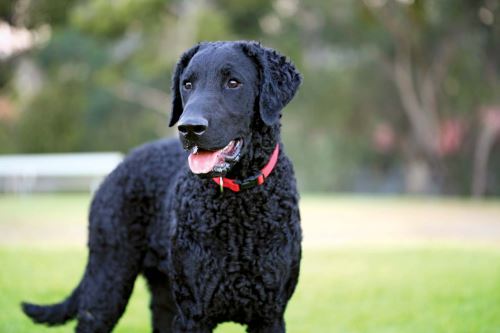
This dog is a versatile hunting retriever that is sturdy, elegant, agile, muscular, and moderately built. It has slightly rectangular proportions, a level back, a deep chest, and a long tail covered with curls and carried straight.
The head is wedge-shaped, with long, strong jaws and a muzzle that tapers neatly to the nose. The eyes are almond-shaped, and the small ears lie close to the head.
Curly Coated Retriever Breed Facts
- POPULARITY: Very rare
- FAMILY: Gundog, Retriever
- AREA OF ORIGIN: England
- DATE OF ORIGIN: 1700s
- ORIGINAL FUNCTION: Water retrieving
- TODAY’S FUNCTION: Water retrieving, retrieving field trials, companion
- OTHER NAME: None
Year of AKC recognition: 1924
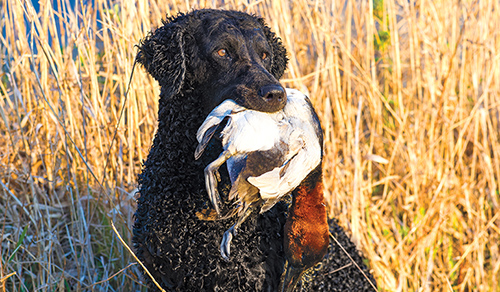
Activity level: This dog is famous for its energy and endurance. It will work and play hard in any weather, with a total disregard of inclement weather. Curly Coated Retrievers can live in the water, so a swimming regimen will keep this charming water dog happy.
Curly Coated Retriever Temperament
This breed is self-confident and proud. It is a determined worker and a charming, gentle family companion. The dog is responsive to training and noted to be a calm, affectionate, well-mannered house dog. However, this is a slow-maturing breed, and owners must be prepared to provide puppies with patient guidance. They’re easy to train, and they’re excellent guard dogs and can be somewhat reserved with strangers.
Grooming

The coat is easy-care and quick-drying. It requires only occasional brushing and bathing. The ears and tail may be trimmed slightly for neatness.
Coat: The Curly’s unique coating is water-resistant and protects it from weather and punishing cover. It is a combination of short, smooth, straight coat on the forehead, face, forelegs, and feet. The body coat is thick, crisp, and curly, with looser, more open curls on the ears.
Color: Solid black or liver
Health
- Major Concerns: CHD
- Minor Concerns: none
- Occasionally Seen: distichiasis, cataract, elbow dysplasia
- Suggested Tests: hip, cardiac, eye, (elbow)
- Life Span: 8—12 years
- Weight: 60—70 pounds
- Height: male: 25—27 inches; female: 23—25 inches
Curly Coated Retriever Buyer’s Guide and Advice
Be sure to purchase from a breeder who does regular health testing. A list of breeders is available on the parent’s club website.
Regional clubs: You can access links to local clubs in the US on the parent club’s website under “Regional Clubs.”
Rescue: CCRCA Rescue and Referral information are available under Curley-Coated Retriever Rescue on the club’s home page.

